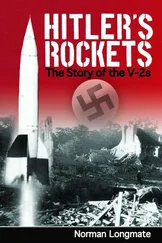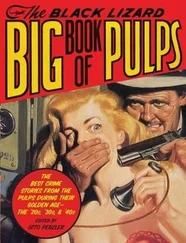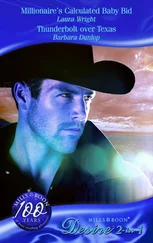Mike Mullane - Riding Rockets
Здесь есть возможность читать онлайн «Mike Mullane - Riding Rockets» весь текст электронной книги совершенно бесплатно (целиком полную версию без сокращений). В некоторых случаях можно слушать аудио, скачать через торрент в формате fb2 и присутствует краткое содержание. Жанр: Старинная литература, на английском языке. Описание произведения, (предисловие) а так же отзывы посетителей доступны на портале библиотеки ЛибКат.
- Название:Riding Rockets
- Автор:
- Жанр:
- Год:неизвестен
- ISBN:нет данных
- Рейтинг книги:3 / 5. Голосов: 2
-
Избранное:Добавить в избранное
- Отзывы:
-
Ваша оценка:
- 60
- 1
- 2
- 3
- 4
- 5
Riding Rockets: краткое содержание, описание и аннотация
Предлагаем к чтению аннотацию, описание, краткое содержание или предисловие (зависит от того, что написал сам автор книги «Riding Rockets»). Если вы не нашли необходимую информацию о книге — напишите в комментариях, мы постараемся отыскать её.
Riding Rockets — читать онлайн бесплатно полную книгу (весь текст) целиком
Ниже представлен текст книги, разбитый по страницам. Система сохранения места последней прочитанной страницы, позволяет с удобством читать онлайн бесплатно книгу «Riding Rockets», без необходимости каждый раз заново искать на чём Вы остановились. Поставьте закладку, и сможете в любой момент перейти на страницу, на которой закончили чтение.
Интервал:
Закладка:
I swallowed the last of my beer and rose from the sand. As I turned, my eyes were seized by Columbia’s xenon halo. Over the black silhouettes of the palmettos, the salt-laden air glowed white with it. She awaited her Prime Crew. I envied the hell out of them.
Epilogue
In my post-MECO life I found an unlikely horizon to explore—I became a professional speaker. Given my early adventures at the podiums of America, that might seem like a disaster waiting to happen but I’ve learned to corral my Planet AD tendencies and fake normalcy. With a microphone in my hand I am a model of political correctness. Hoot would never recognize me. I deliver inspiring, motivational, and humorous programs on the subjects of teamwork and leadership. I learned the good, the bad, and the ugly about those topics while at NASA.
This book has been another horizon I had to sail over. There has always been a secret chamber in my soul where the flame of literary creation has flickered. In high school I loved it when teachers assigned term papers, a fact I kept quiet, knowing my classmates would have beaten me to death had they known. Sometimes my prose would be seriously misplaced, as when I devoted a paragraph in my science fair report to the beautiful sunset that had been a backdrop to one of my homemade rocket launches. I was teased by my fellow junior scientists for that. Of course, ego played its part in my literary quest—I wanted to tell my story. But I had noble objectives, too. I wanted the world to understand the joy and terror that astronauts and our spouses experience. I know other astronaut authors have attempted to convey the same thing and, no doubt, many will try in the future. This has been my best shot at it. Finally, I wanted to tell the world a little about my mom and dad. Heroes like them are rare and they deserve a measure of immortality between the covers of a book.
My mom would not live to see herself in these pages. On Memorial Day 2004, she was diagnosed with advanced pancreatic cancer and died on July 4 at age seventy-nine. I was the one who told her of the doctor’s prognosis—that she had just a few weeks to live. She took the news with her characteristic courage. She didn’t utter a word of dismay or shed a single tear. She merely shrugged her shoulders, as if I had just told her she had nothing more serious than a stomach virus, and said, “Well, I’ve had a great life.” This from a woman who endured the terror of her husband serving in WWII, who raised six children with that same man in a wheelchair, and who was further cheated when she was widowed at age sixty-four. It hardly sounded like a “great life.” But my mom always saw the glass as half full and smiled and laughed her way through life until her last conscious moment. As one of my brothers said, “Mom set the bar damned high on living and dying.” That she did. As I sat with her in the ebbing days of her life, random images from that life flashed in my brain. I saw her squatting next to a campfire, cooking pancakes and bacon. I saw her pouring my dad’s urine from a milk carton into a motel toilet. I saw her handing over the stainless-steel extension tube of her vacuum cleaner so I could fashion it into a rocket. I saw her “mooning” the camera during her wait for the launch of STS-36. She had sewn the mission number on the rear of her “good luck” green briefs and, at the beach house, had bent over to show the unique cheerleading sign on the billboard of her sixty-four-year-old backside.
With me and two of my brothers holding her hands she died at home and was laid to rest in the same grave as my father at the Veterans Cemetery in Santa Fe, New Mexico. I placed another set of my shuttle mission decals on the new grave marker. They were Mom’s missions, too.
As I write these words, only five TFNGs remain on active duty with NASA: Fred Gregory, Steve Hawley, Shannon Lucid, Anna Fisher, and Steve Nagel. All of them are in administrative positions and will probably never fly in space again. The space history books are closed on the TFNGs. But our class wrote some remarkable entries in those books:
First American woman in space: Sally Ride.
First African American in space: Guy Bluford.
First Asian American in space: El Onizuka.
First American woman to do a spacewalk: Kathy Sullivan.
Most space-experienced woman in the world: Shannon Lucid, with a total of 223 days in space, including a six-month tour on the Russian Mir space station.
While flying the MMU, Bob Stewart, Pinky Nelson, Dale Gardner, and Jim van Hoften became some of the only astronauts to orbit completely free of their spacecraft.
On STS-41C, TFNGs were part of a crew that completed the world’s first retrieval, repair, and re-release into space of a malfunctioning satellite. On STS-51A, TFNGs played key roles in the first capture and return to Earth of a pair of crippled satellites.
Rick Hauck commanded the first post- Challenger mission. Hoot Gibson commanded the first shuttle–Mir space station docking mission. Norm Thagard became the first American to fly aboard a Russian rocket when he was launched to the Russian Mir space station. TFNG Dick Covey commanded the first repair mission to Hubble Space Telescope (HST) to correct its flawed vision. Dan Brandenstein commanded STS-49, a mission to capture and repair a massive communication satellite stuck in a useless orbit. The mission involved an emergency three-person spacewalk, the only such spacewalk ever conducted, and was one of the most difficult shuttle missions in history.
TFNGs logged nearly a thousand man-days in space and sixteen spacewalks. Five became veterans of five space missions (Gibson, Hawley, Hoffman, Lucid, and Thagard). The first TFNGs entered space in 1983 aboard STS-7. Steve Hawley became the last TFNG in space sixteen years later, when he launched on his fifth mission, STS-93, in 1999. TFNGs were ultimately represented on the crews of fifty different shuttle missions and commanded twenty-eight of those. It is not an exaggeration to say TFNGs were the astronauts most responsible for taking NASA out of its post-Apollo hiatus and to the threshold of the International Space Station (ISS).
There are twenty-nine of the original thirty-five TFNGs still living. Besides the loss of the Challenger four and Dave Griggs’s death, Dave “Red Flash” Walker, a veteran of four shuttle flights, succumbed to natural causes at the age of fifty-seven. Dave was the pilot who scared the holy bejesus out of me during the 1981 STS-1 chase plane practices. He had teased death so often, I had come to believe he was bulletproof. I had failed to consider cancer.
We almost had to bury Hoot Gibson in 1990 when he was involved in a midair collision while racing his home-built plane. The other pilot died but Hoot was able to land his severely damaged machine and walk away. If ever there has been a pilot who has worn out a squadron of guardian angels, that would be Hoot. He and Rhea Seddon now live in Tennessee with their three children. Hoot flies for Southwest Airlines and Rhea is the assistant chief medical officer at Vanderbilt Medical Group at that Nashville university.
In my retirement I have noted the deaths of other astronauts whose life paths intersected mine. Sonny Carter’s death was particularly shocking. Sonny had been one of the STS-27 family escorts and Donna had relied on his calming presence during her LCC waits for that mission. He was never without a smile and a positive word. On April 5, 1991, while on the way to give a NASA speech, he died in the crash of a commercial airliner. The manner of his death was a gross violation of the natural order—it was expected that an astronaut dying in a plane would do so as a crewmember, not as a passenger. Sonny was twice cheated…in death at age forty-three and while belted into a passenger’s seat.
Читать дальшеИнтервал:
Закладка:
Похожие книги на «Riding Rockets»
Представляем Вашему вниманию похожие книги на «Riding Rockets» списком для выбора. Мы отобрали схожую по названию и смыслу литературу в надежде предоставить читателям больше вариантов отыскать новые, интересные, ещё непрочитанные произведения.
Обсуждение, отзывы о книге «Riding Rockets» и просто собственные мнения читателей. Оставьте ваши комментарии, напишите, что Вы думаете о произведении, его смысле или главных героях. Укажите что конкретно понравилось, а что нет, и почему Вы так считаете.












